Effects of elevated temperature and CO2 on intertidal microphytobenthos
- PMID: 25888307
- PMCID: PMC4411721
- DOI: 10.1186/s12898-015-0043-y
Effects of elevated temperature and CO2 on intertidal microphytobenthos
Abstract
Background: Microphytobenthos (MPB) are the main primary producers of many intertidal and shallow subtidal environments. Although these coastal ecosystems are particularly vulnerable to anthropogenic activities, little is known on the effects of climate change variables on the structure and productivity of MPB communities. In this study, the effects of elevated temperature and CO2 on intertidal MPB biomass, species composition and photosynthetic performance were studied using a flow-through experimental life support system.
Results: Elevated temperature had a detrimental effect on MPB biomass and photosynthetic performance under both control and elevated CO2. Furthermore, elevated temperature led to an increase of cyanobacteria and a change in the relative abundance of major benthic diatom species present in the MPB community. The most abundant motile epipelic species Navicula spartinetensis and Gyrosigma acuminatum were in part replaced by tychoplanktonic species (Minidiscus chilensis and Thalassiosira cf. pseudonana) and the motile epipelic Nitzschia cf. aequorea and N. cf. aurariae. Elevated CO2 had a beneficial effect on MPB biomass, but only at the lower temperature. It is possible that elevated CO2 alleviated local depletion of dissolved inorganic carbon resulting from high cell abundance at the sediment photic layer. No significant effect of elevated CO2 was detected on the relative abundance of major groups of microalgae and benthic diatom species.
Conclusions: The interactive effects of elevated temperature and CO2 may have an overall detrimental impact on the structure and productivity of intertidal MPB, and eventually in related ecosystem services.
Figures
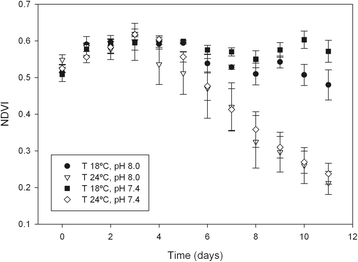

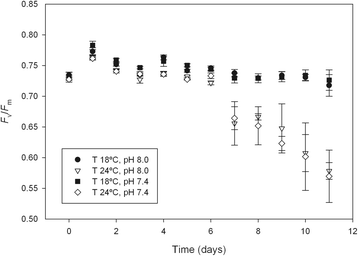
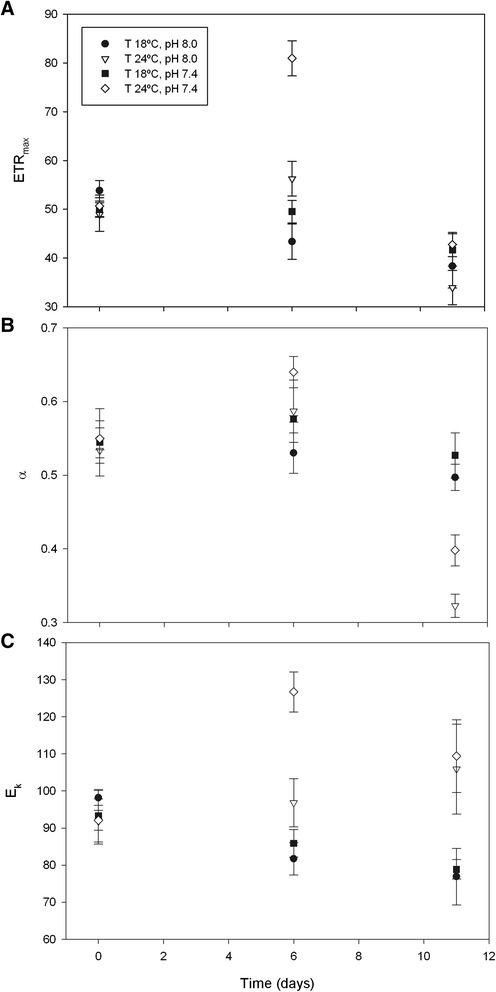
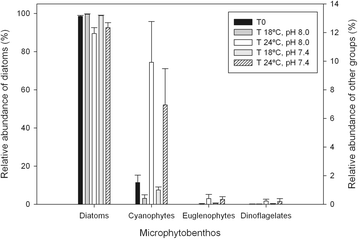
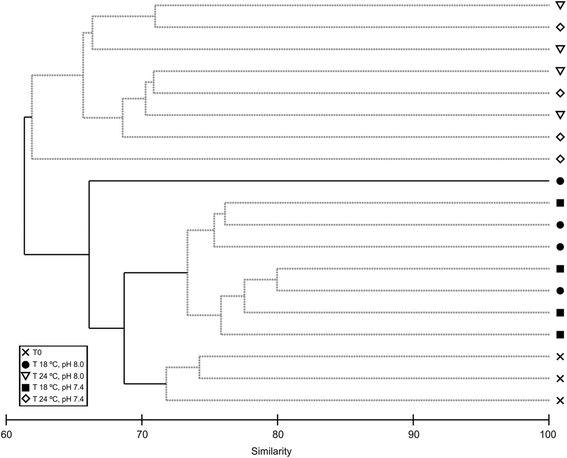
References
-
- MacIntyre HL, Geider RJ, Miller DC. Microphytobenthos: the ecological role of the ‘secret garden’ of unvegetated, shallow-water marine habitats. I. Distribution, abundance and primary production. Estuaries and Coasts. 1996;19:186–201. doi: 10.2307/1352224. - DOI
-
- Underwood GJC, Kromkamp J. Primary production by phytoplankton and microphytobenthos in estuaries. Adv Ecol Res. 1999;29:93–153. doi: 10.1016/S0065-2504(08)60192-0. - DOI
-
- Sundbäck K, Miles A, Goransson E. Nitrogen fluxes, denitrification and the role of microphytobenthos in microtidal shallow-water sediments: an annual study. Mar Ecol Progr Ser. 2000;200:59–76. doi: 10.3354/meps200059. - DOI
-
- Bellinger BJ, Underwood GJC, Ziegler SE, Gretz MR. Significance of diatom-derived polymers in carbon flow dynamics within estuarine biofilms determined through isotopic enrichment. Aquat Microb Ecol. 2009;55:169–87. doi: 10.3354/ame01287. - DOI
-
- Morris EP, Kromkamp JC. Influence of temperature on the relationship between oxygen- and fluorescence-based estimates of photosynthetic parameters in a marine benthic diatom. Eur J Phycol. 2003;38:133–42. doi: 10.1080/0967026031000085832. - DOI
Publication types
MeSH terms
Substances
LinkOut - more resources
Full Text Sources
Other Literature Sources
Medical

